"Today, we’re introducing three revolutionary products," said Apple's Steve Jobs during the company's 2007 Macworld keynote.
"The first one is a widescreen iPod with touch controls. The second is a revolutionary mobile phone.
"And the third is a breakthrough internet communications device.
"An iPod, a phone, and an internet communicator. An iPod, a phone … Are you getting it? These are not three separate devices, this is one device, and we are calling it iPhone."
These were the words Jobs used to introduce the iPhone. And I remember them very well. But I wasn't at Macworld, I was a first timer at the Consumer Electronics Show, where I've also spent the last week.
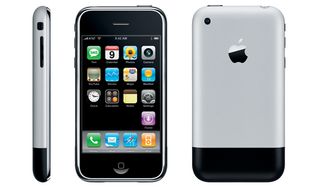
During the Apple keynote, there was a a hush over the room, although as I was working on something I didn't notice it until one of my colleagues turned to me and asked if I had seen what Apple had announced. I couldn't believe my eyes.
We knew this was big. The huge, whopping, massive deal was that it was a touchscreen, and what appeared to be an unbelievably good touchscreen with gestures. There was nothing like that around. The Nokia N95 was a great - and pretty smart - phone of its time, but it was nothing like an iPhone.
There were many questions
The iPhone announcement raised as many questions as it answered. What would it be like to use? How had Apple done it - in cahoots with AT&T - without anybody finding out the details? How could it succeed in phones? Could having hardly any physical controls really work? Would having a state-of-the-art phone with just EDGE and no 3G really be any good?
Of course, we now know the answer to these questions and Apple has sold a whopping one billion iPhones in the interim. But at the time it seemed like there was a lot of stuff still to be worked out, not least whether or not there would be a UK launch - the US got the phone in July 2007.
Talking of that, I also attended the subsequent UK iPhone launch at London's Regent Street Apple Store in September 2007, which I described as "complete pandemonium" - I've never seen anything quite like it before or since.
You can read my 2007 piece about the launch over at TechRadar, where I used to be Deputy Editor.
As I said in that piece, getting into the store was chaos even for the media - in the melee I headbutted a camera man and tripped over a newspaper photographer - it was a real battle for elbow room as Apple hosts greeted the first few buyers through the door with whoops and chants.
You can also check out my Flickr album from the time of the queues outside the Regent Street store and various phone shops.
Below we've listed all the iPhones year-by-year. While I've still got my original iPhone, a personal favourite has to be the iPhone 4. After the 3G it was a truly groundbreaking design and the retina display was simply beautiful.
Which is your favourite?
So, let's run down the last 10 years handset-by-handset:
iPhone (2007)
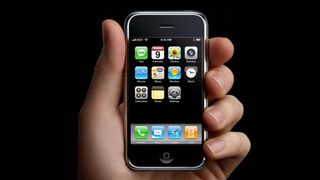
On paper, the first iPhone wasn't that great but it's difficult to overstate the impact it had on the smartphone market: by eschewing the keypad for a touchscreen and adding advanced computer-like capabilities that hadn't been seen before, it set the standard for this modern device. "Apple is going to reinvent the phone," said Steve Jobs at the time, and he was right - but the original iPhone had no third-party apps, no GPS and no video recording. It also didn't do 3G - we were stuck with the EDGE network - or MMS, it had an annoying recessed headphone socket, the camera was rotten and it didn't do cut and paste. It was also rather expensive for the time - £269 with a £35 per month contract.
iPhone 3G (2008)

Also missing from the original iPhone was 3G support, the top data speed of the time, though this was added to the second generation the following year (along with GPS). The first iPhone had been warmly received but by the 3G model people were really starting to see its long-term potential - and the concurrent launch of the App Store was a huge part of that, a true watershed moment in smartphone history.
iPhone 3GS (2009)

And so began the Apple tradition of adding an 'S' to the end of the name for a minor iPhone upgrade. The 2009 model of the iPhone did bring with it video recording capabilities for the first time, and the camera itself got an upgrade too. The "S" ostensibly stood for speed and reflected the improvements in the internal components, and Voice Control (not yet called Siri) was added to the iPhone too.
iPhone 4 (2010)
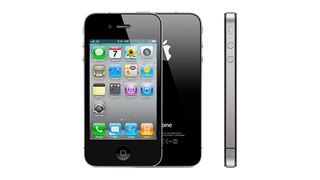
If the iPhone 3GS was a smaller step forward, the iPhone 4 was a big one - it had a new, sleeker, more modern look, and massively increased the pixel count while keeping the same 3.5-inch display size (this was the first Retina display). It was the first iPhone with a front-facing camera, the first iPhone with some level of multitasking, and one of the most significant iPhones Apple has ever made.
iPhone 4S (2011)
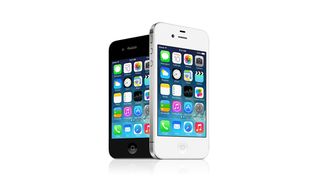
Apple swung back to the minor "S" upgrade for 2011's iPhone 4S, so there's not too much to write home about in terms of new specs and new features. The camera did get an upgrade up to 8 megapixels and perhaps the biggest improvement on the software side (we're up to iOS 5.0 now) was the arrival of Siri, the digital assistant that now plays such a major role on the iPhone.
iPhone 5 (2012)
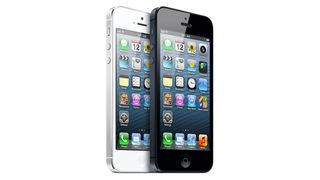
True to the earlier pattern set down by previous generations, the iPhone 5 was a major upgrade. It added an extra row of icons with an extra-tall screen (remember that?), introduced the Lightning connector and had a lighter, aluminium casing. It really did usher in the modern iPhone era. On the iOS side, we got our first look at a rather buggy Apple Maps, taking over from Google Maps as the default option.
iPhone 5C (2013)

In 2013 Apple decided to start releasing not one but two iPhones every September. The iPhone 5C was very much a rebadged iPhone 5 with a few cosmetic changes, giving iPhone buyers an option that was cheaper but still brand new for the first time. iOS 7 was launched at the same time, bringing true multitasking for apps and introducing the Control Centre for more convenient access to the iPhone's settings.
iPhone 5S (2013)

The iPhone 5S was the flagship model for 2013, with a revamped design and a little feature called Touch ID introduced to the iPhone line-up for the first time. Another first was the 64-bit A7 processor inside the phone, an architecture change that other manufacturers have since followed. iOS 7 had a visual overhaul as well, introducing the bright icons and translucent menus that are still in place today.
iPhone 6 (2014)

We're back up to date with the iPhone 6 Apple launched last year and the one still currently on sale as the flagship. As well as another design revamp, the iPhone 6 extended the display size to 4.7 inches and added in more pixels to boot. Also worth noting is the introduction of NFC for Apple Pay and other services, plus a significant upgrade for the camera, giving better photo and video results than ever before.
iPhone 6 Plus (2014)

For a long time Apple resisted the temptation to follow the industry trend for bigger and bigger smartphone screens, but it finally bowed to the pressure with the iPhone 6 and particularly the iPhone 6 Plus. With a display of 5.5 inches from corner to corner, it's the biggest iPhone ever and gets close to iPad mini territory. The handset has certainly come a long way since 2007.
iPhone 6S (2015)
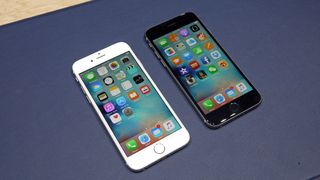
Apple's iPhone 6S didn't come as much of a surprise to many. Every odd-numbered year has yielded an 'S' variant of the previous year's phone, offering a few upgrades to the handset but largely keeping the same design and chassis.
The iPhone 6S is almost identical to 2014's iPhone 6, to the point that we could barely tell the difference between the two in the hand, with a little extra thickness and weight to give you the clue that you're holding a next-gem phone in your hand. But while the outside is identical, the stuff that Cook's Crew crammed inside is a change - hence Apple's decision to give this phone the tagline: 'The Only Thing That's Changed Is Everything'.
With Force Touch there was a new way of touching the phone, plus an improved chassis and a pseudo-magical way at viewing your photos (Live Photos),
iPhone SE (2016)
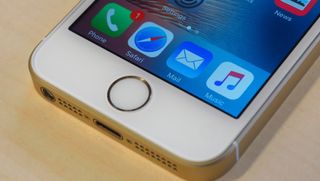
This one was a bit of a surprise. We'd expected a smaller iPhone with a lower price tag, but we didn't expect it to look like the iPhone 5 but with completely whizz-bang up-to-date innards. In our iPhone SE review we said "you won't buy this phone - but you will tell someone else to". Compared with its bigger screened bretheren it represented genuine value for money - although not compared to the huge number of Android alternatives of course.
iPhone 7 (2016)
It's here. It seems nailed on we'll get a new iPhone 7 and iPhone 7 Plus tonight - check out all we've got to tell you about the iPhone 7
iPhone 7S (2017)
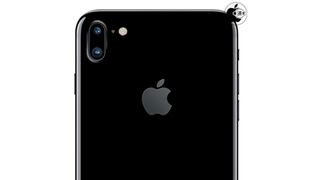
After the iPhone 7 and 7 Plus it seems nailed on we'll get a new iPhone 7S and iPhone 7S Plus this year. And the iPhone 7S rumor mill is already well underway.
iPhone 8 (2018)
After the iPhone 7S line-up, we'll probably get an all-new iPhone in 2018. Here's the full lowdown on what we want to see from the next all-new design: iPhone 8 rumours and what we want to see



